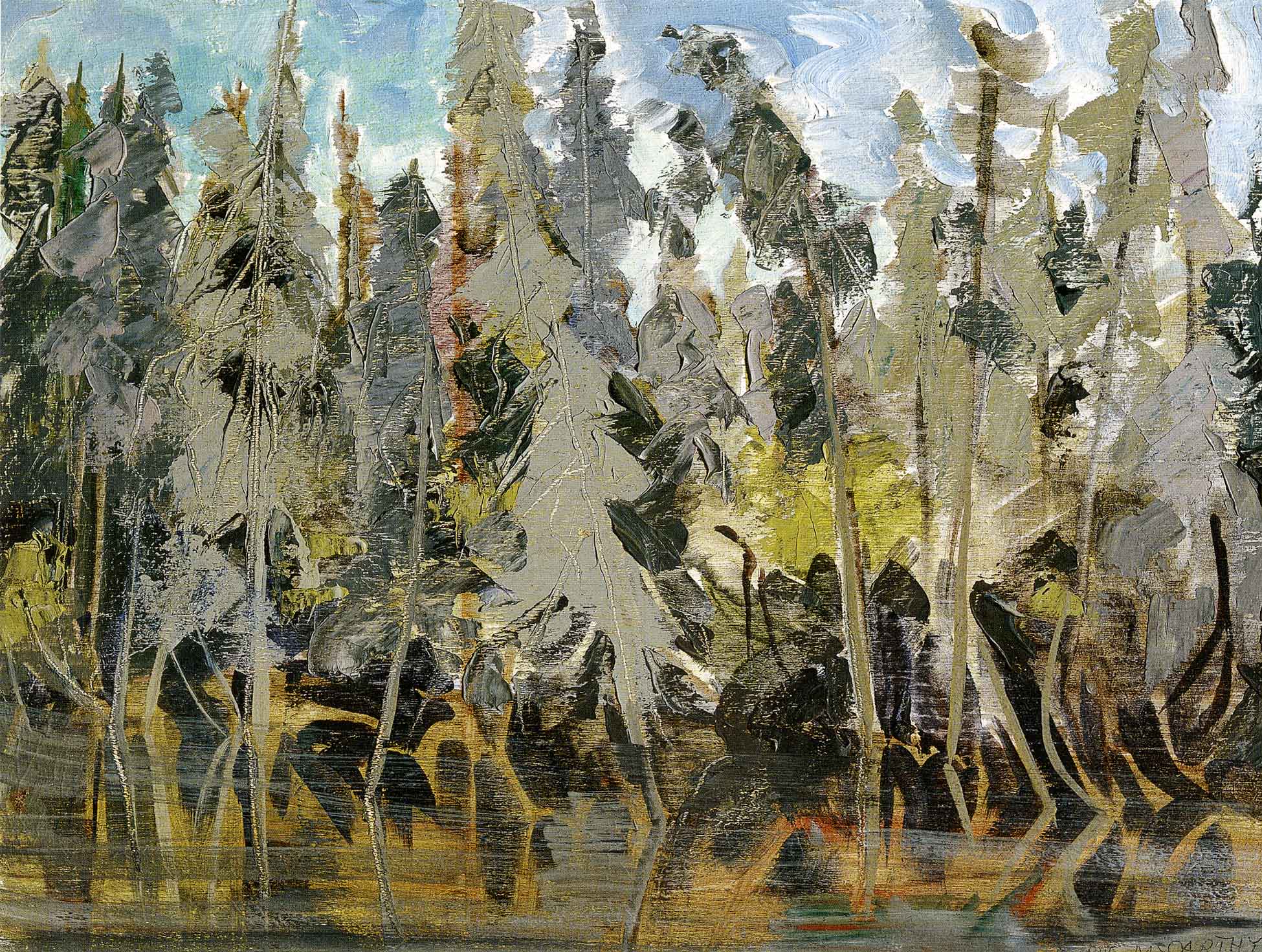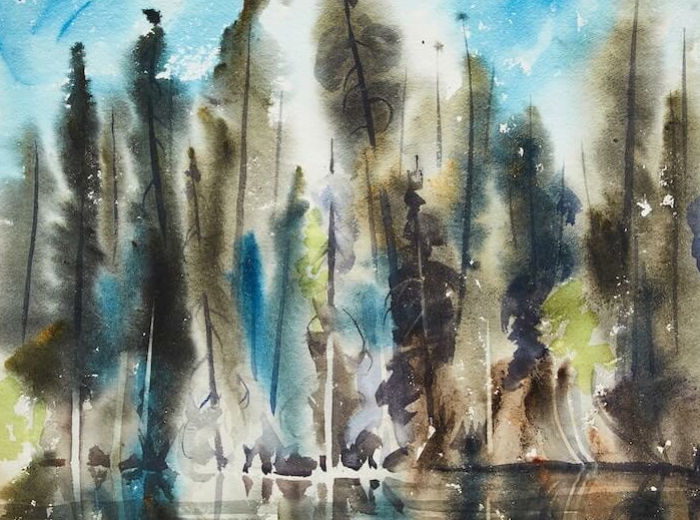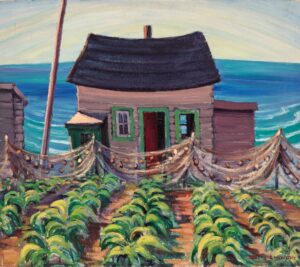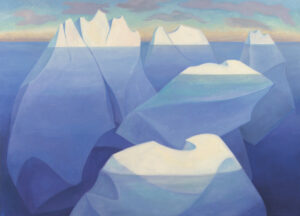Grey Spruce in the Ditch 1977

Doris McCarthy, Grey Spruce in the Ditch, 1977
Oil on wood, 30.5 x 40.6 cm
Doris McCarthy Gallery, Scarborough
This work is a fascinating study in oil of spruce trees among other foliage, painted predominantly in grey. Most of the trees are in decline, signalled by the severe branch dieback. The murky water is rendered in thin streaks of horizontal grey paint amid clear water with immaculate reflections. In this highly tactile work, McCarthy has taken great care to capture the differing textures with an eye for detail, yet, judging by the brushwork, in a simple, almost hasty manner.

Grey Spruce in the Ditch is unusual in McCarthy’s oeuvre because the foliage dominates the canvas, generating a claustrophobic feeling amplified by the cropping—a device also used in Valley of the Bow River Above Revelstoke, 1938. It is interesting to compare it with a watercolour of the same scene, Grey Spruce, Inuvik, 1977. We don’t know which version came first, but the watercolour appears more intangible and less textured, with the white paper standing in at times for a tree trunk. The water seems pristine, then muddied, with a dragging of grey across the reflections. The sense of open space is produced in part by the semi-transparency of the objects depicted and the white ground that shows through in areas where there is a light wash of colour. It’s impossible to say that one version is better than the other—they are simply different.
There’s no hint in either work of location, but the title of the watercolour indicates that McCarthy painted them during her visit to the Northwest Territory community of Inuvik in June 1977 at the invitation of John and Joan (Colly) Scullion. She met this couple on her initial visit to the Arctic in 1972, where John worked as the settlement manager for Pond Inlet on the northern part of Baffin Island. After she gave one of her works to them, they went on to acquire “the largest privately owned collection of McCarthy paintings extant,” as she wrote in 1991.
McCarthy was curious about the Indigenous peoples she encountered on her trips to the Arctic, and it is possible that she knew of the importance of spruce trees to the Gwich’in First Nations people of the area who used them for everything from building fires to making ropes and many medicinal purposes. Inadvertently, McCarthy may have been recording the effect of climate change: one of the results of rising average temperatures is the movement of spruce trees into northern areas that used to be tundra.

 About the Author
About the Author
 More Online Art Books
More Online Art Books
 Acknowledgements
Acknowledgements